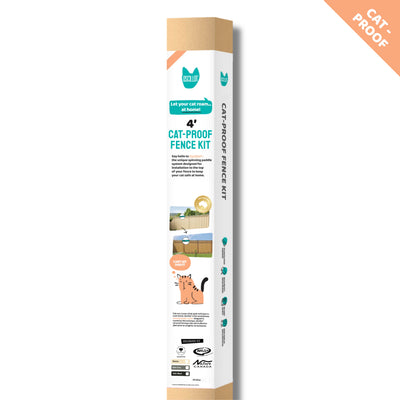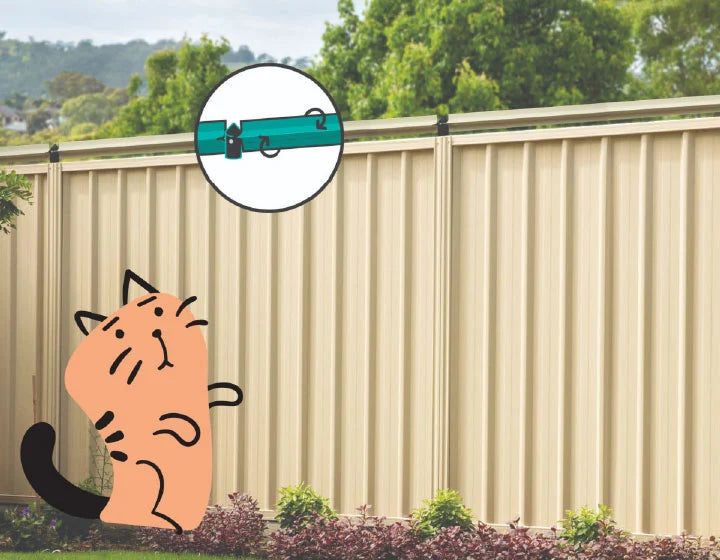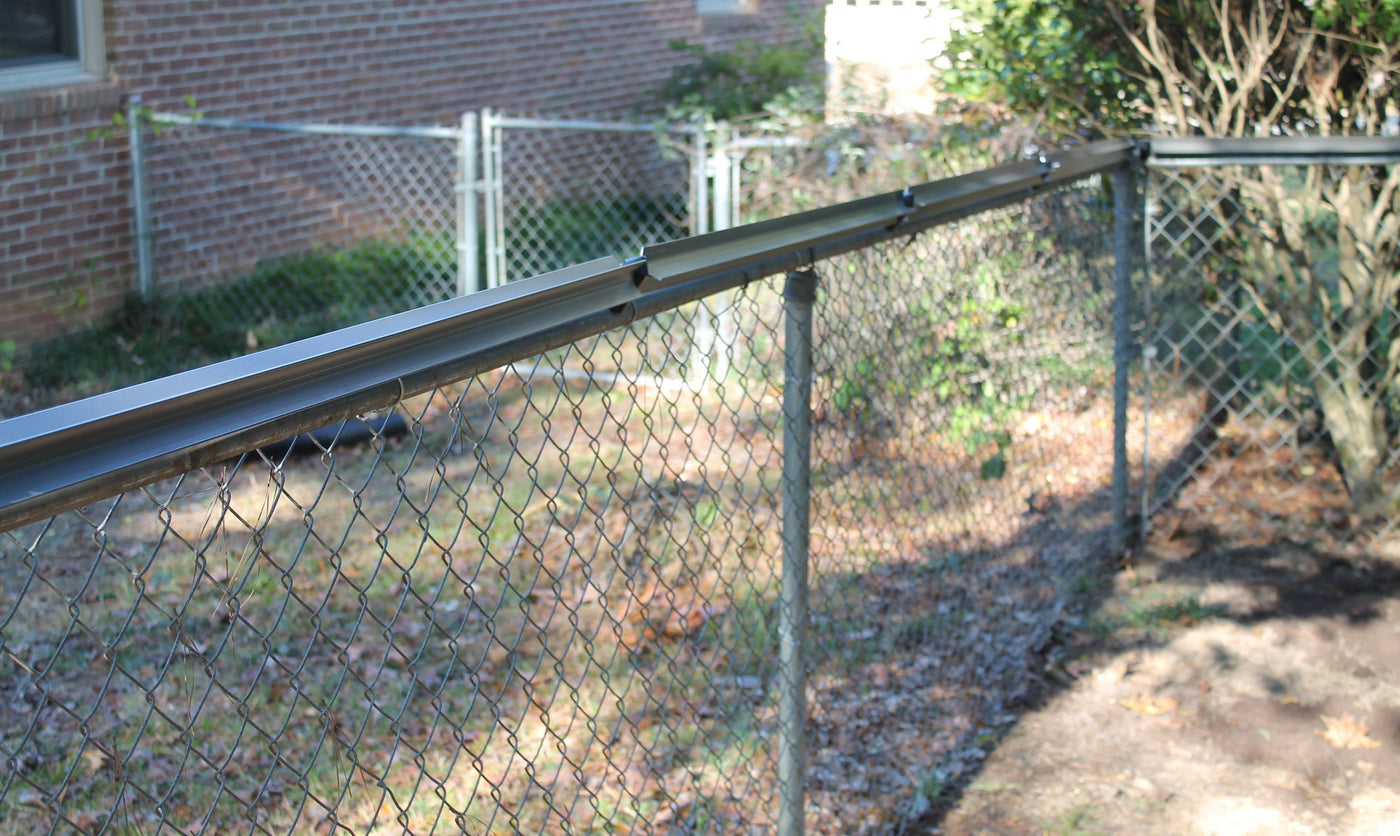How to Install a Cat-Proof Fence Easily

Keeping your cats safe outside is important for many cat owners. Installing a cat-proof fence is a good way to do this. This guide will show you how to set up a safe outdoor area for your cats using Oscillot® products. This will let your cats enjoy being outside while giving you peace of mind.
Key Benefits of Installing a Cat-Proof Fence
- Keeps cats safe from outdoor dangers
- Lowers vet bills from fewer injuries
- Lets cats enjoy the outdoors safely
- Gives owners peace of mind
- Protects local wildlife
- Improves relations with neighbours
- Shows responsible pet ownership
Understanding the Oscillot® Cat-Proof Fence System
The Oscillot® Cat Containment System stops cats from climbing over fences. It creates a safe outdoor space for your pets. The system has parts that work together to make a barrier cats find hard to get past, keeping them in your yard without hurting them.
The Oscillot® system includes:
- Dual knuckle post kits: These hold up the paddles.
- Paddles: These spin when cats try to climb over.
- Installation hardware: All the screws and bolts you need to attach the system to your fence.
Preparing for Installation
1. Measure Your Yard
Measure your yard carefully to know how much fencing you need. Use a tape measure to find out how long your fence is. Measure twice to be sure. Draw a simple map of your yard with the measurements.
2. Choose the Right Kit Size
Oscillot® has different kit sizes for different yard sizes. Pick the kit that fits your fence length. For example, the 37.2 Metre Cat-Proof Fence Kit is good for big yards, while the 3.7 Metre Cat-Proof Fence Kit works for small areas. Get a bit extra just in case.
3. Gather Tools and Materials
You'll need these tools:
- Drill with bits for your fence type
- Screwdriver
- Level
- Measuring tape
- Pencil or marker
- Safety glasses and gloves
- Ladder or step stool
- Hacksaw (just in case)
Step-by-Step Installation Guide
1. Prepare the Existing Fence
Check your fence for damage and fix any problems. Remove things near the fence cats could use to climb over. Trim back any plants that are too close.
2. Install the Dual Knuckle Post Kits
- Mark where to put the posts, usually 1.5 to 2 meters apart.
- Drill small holes where you marked.
- Attach the posts with screws.
- Use a level to make sure they're straight.
3. Attach the Paddles
- Start at one end and snap the paddles into the posts.
- Make sure each paddle can spin freely.
- Keep attaching paddles along the whole fence.
- Use special pieces for corners or joints.
4. Adjust and Align the System
- Check that all paddles spin easily.
- Look for gaps and fix them.
- Use your level again to make sure everything is straight.
- Test the system by gently pushing on it in different spots.
Installing on Different Fence Types
Wooden Fences
- Use wood screws to attach the posts.
- Make sure you're drilling into solid wood.
- Use longer screws for old fences.
- Put wood preservative on the screw holes.
Metal Fences
- Use self-tapping screws or bolts.
- You might need special brackets for chain-link fences.
- Use a metal drill bit.
- Put anti-rust paint on drilled spots.
Brick or Concrete Walls
- Use masonry anchors.
- Drill holes with a masonry bit.
- Put weatherproof sealant around the anchors.
Learn more about cat-proofing different fence types for the best installation.
Maintaining Your Cat-Proof Fence
Regular Inspections
- Check for damage monthly.
- Make sure everything is still tight.
- Look for signs of wear.
- Check for new escape routes.
- In winter, clear any ice.
Cleaning and Lubricating Components
- Clean with mild soap and water.
- Dry everything well.
- Use silicone lubricant if parts get stiff.
- Remove leaves and dirt.
- Clean more often if near salt water.
Replacing Worn Parts
- Keep spare parts handy.
- Replace damaged paddles quickly.
- Fix loose posts.
- Check and replace seals as needed.
- Do a full check every few years.
Check the installation guide for more maintenance tips.
Safety Considerations
Ensuring Proper Installation for Cat Safety
- Make sure everything is attached securely.
- Check for sharp edges.
- Ensure the fence is tall enough.
- Look for gaps at the bottom of the fence.
- Keep electric parts safe from cats.
Monitoring Your Cat's Initial Interactions
- Watch your cat closely at first.
- See how they interact with the fence.
- Reward good behaviour.
- Be patient as your cat learns.
- Use visual markers to help cats see the boundary.
Combining with Other Safety Measures
- Use ID tags on collars.
- Consider microchipping.
- Remove dangerous plants from your yard.
- Install outdoor cameras if you want.
- Check your yard regularly.
Learn more about cat fence safety to protect your cats.
Cost-Effectiveness of DIY Installation
Comparing Professional Installation vs. DIY
DIY installation can save you money and let you work at your own pace. But professional installation might be better for complex jobs or if you don't have time.
Long-term Benefits and Savings
- Less money spent on vet bills
- No costs for finding lost cats
- Your property might be worth more
- Possible savings on pet insurance
- No costs for fixing damage caused by cats
Warranty and Customer Support
- Product warranty for faulty parts
- Help available for installation questions
- Online guides and videos
- Help with problems after installation
- Option for professional help if needed
Find out why DIY installation is easy with Oscillot® kits.
Customer Experiences and Testimonials
Success Stories from Oscillot® Users
- Owners feel more relaxed knowing their cats are safe
- Indoor cats are happier with outdoor access
- Better relationships with neighbours
- Less stress for cats and owners
- More enjoyment of yard and garden
Before and After Scenarios
- From worry to relaxed outdoor time
- From small indoor spaces to safe outdoor areas
- Fewer vet visits and healthier cats
- Improved cat behaviour
- Ability to have more cats
Tips from Experienced Installers
- Measure carefully and get a bit extra
- Prepare all tools before starting
- Work step-by-step and check as you go
- Ask for help if you need it
- Install during cooler parts of the day
- Make it a family project
- Take pictures as you install
Visit our gallery page to see real cat-proof fence installations.





